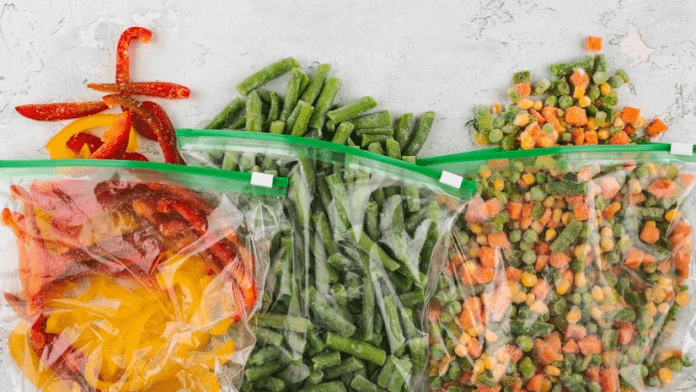In the world of food preservation and pharmaceuticals, one method stands out as a game-changer for extending the shelf life of perishable items while retaining their essential qualities: freeze drying. This remarkable process, which combines science and technology, has a wide range of applications and has earned its place as a staple in various industries. In this article, we will delve into the world of freeze drying, exploring the process, its applications, and the unique benefits it offers.
The Freeze Drying Process
Freezing
The first step in freeze drying involves freezing the product at extremely low temperatures, often below -40°C (-40°F). This deep freeze solidifies the water content in the product.
Primary Drying (Sublimation)
Once frozen, the product is placed in a vacuum chamber. Under reduced pressure, the frozen water within the product undergoes sublimation. Sublimation is the process by which a substance transitions directly from a solid to a gas without passing through the liquid phase. In this case, ice in the product turns into water vapor.
Secondary Drying (Desorption)
After most of the ice has been removed through sublimation, the product undergoes a secondary drying phase. During this stage, the temperature is slightly raised, causing any remaining water molecules to vaporize. This ensures that the product is completely dry and stable.
Packaging
Once the freeze-drying process is complete, the product is sealed in airtight packaging, such as vacuum-sealed bags or jars with moisture-absorbing packets. This step is crucial for preventing reabsorption of moisture and maintaining the product’s shelf stability.
Applications of Freeze Drying
Food Preservation
Freeze drying has revolutionized the food preservation industry. It allows fruits, vegetables, meats, and even entire meals to be preserved for extended periods while retaining their original flavor, texture, and nutritional value. Freeze-dried foods are popular among outdoor enthusiasts, astronauts, and emergency preparedness enthusiasts.
Pharmaceuticals
In the pharmaceutical industry, freeze drying is commonly used to stabilize and extend the shelf life of sensitive drugs and vaccines. The process prevents chemical degradation and ensures that medications remain potent and safe for use.
Biotechnology
Freeze drying plays a vital role in the biotechnology field, where it is used to preserve enzymes, antibodies, and other biologically active substances. These freeze-dried products are essential components in research and medical diagnostics.
Coffee and Tea
Premium coffee and tea producers employ freeze drying to create instant coffee and tea products that retain the aroma and flavor of freshly brewed beverages. Freeze-dried coffee is known for its convenience and quality.
Cosmetics
Certain cosmetic products, such as skin creams and serums, contain active ingredients that can degrade over time. Freeze drying helps maintain the efficacy of these ingredients and ensures that the products remain effective.
Benefits of Freeze Drying
Preservation of Nutritional Value
One of the most significant advantages of freeze drying is its ability to preserve the nutritional value of foods and pharmaceuticals. Unlike traditional drying methods that can cause nutrient loss, freeze drying retains the product’s vitamins, minerals, and essential compounds.
Long Shelf Life
Freeze-dried products have an exceptionally long shelf life when stored properly. The removal of moisture inhibits the growth of microorganisms, preventing spoilage and degradation.
Lightweight and Compact
Freeze-dried products are lightweight and have minimal moisture content, making them ideal for backpacking, camping, and space travel. This characteristic also reduces transportation costs.
Rehydration
Freeze-dried foods and pharmaceuticals can be easily rehydrated by adding water. This convenience makes them an excellent choice for quick and nutritious meals or reconstituting medications.
Minimal Heat Exposure
Unlike traditional drying methods that use heat, freeze drying involves minimal heat exposure. This prevents the deterioration of heat-sensitive compounds and flavors.
The Future of Freeze Drying
As technology advances, the field of freeze drying continues to evolve. Researchers are exploring new applications, such as 3D printing of freeze-dried pharmaceuticals, which would allow for personalized medications with precise dosages. Additionally, innovations in freeze drying equipment and techniques are improving efficiency and reducing energy consumption, making the process more sustainable.
Conclusion
Freeze drying is a remarkable process that has transformed the way we preserve and consume a wide range of products, from food to pharmaceuticals. Its ability to maintain the quality, nutritional value, and shelf stability of these items has made it an invaluable tool in various industries. As technology continues to push the boundaries of what is possible, the future of freeze drying holds exciting possibilities that will further enhance its applications and benefits. Whether you’re savoring a tasty freeze-dried meal on a camping trip or benefiting from the long shelf life of freeze-dried pharmaceuticals, this process plays a crucial role in our modern world.
